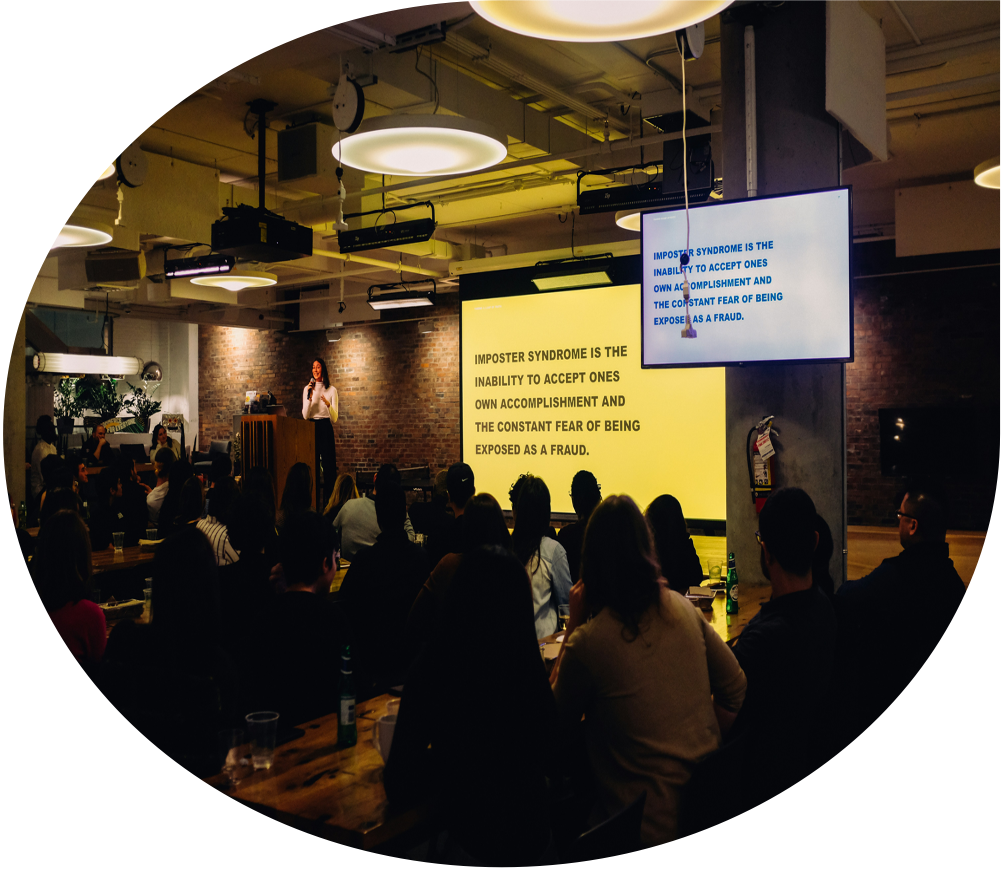You have eXperienced this one-death by Powerpoint.
In the rare and unusual case that you have not yet been introduced to Powerpoint, it is a presentation software from Microsoft that offers the opportunity to create visual slides. (And if you really haven’t encountered Powerpoint, would you drop us a line? We’d really like to know!)
Back to the point (pun intended…). When someone is sharing key concepts using Powerpoint, and it contains numerous slides with lots of copy, confusing images, incoherent messaging, and is replete with details like pricing and integrations and nuances and places to get lost in a detour-well, that is death by Powerpoint. The audience simply gets bored, tunes out, can’t keep up with details, or is incapable of processing the influx of soooo much information.
Plus the person delivering that presentation has to manage all the clicking around in that deck, which can be awkward if it is not pacing well, gets stuck, or they are not familiar enough to know how to navigate well.
As a quick side note, remember that Jessica, SavvyX co-founder, is Swedish. And any card-carrying member of the Scandinavian countries will be an advocate for minimalism. So one of our marketing “hacks”-using the term loosely-is to keep copy lean and clean.
You do not want to “kill” your deals before they’ve even had a chance to understand the value that your solution can bring to your customers. So, save your deals-think Swedish.
Takeaways:
How do you know you are in a death by Powerpoint situation? The surefire sign is that your future customer(s) becomes unresponsive to your contact requests.
If your deck has ALL the information in it and no stone is left unturned in your information, there is no reason for your future customer to have a personal conversation or ask questions about your solution. Instead, your future customer will likely continue to shop around, comparing you to your competitors, and then contact you only after they’ve made their buying decision.
Your Powerpoint sales deck has one job-to open a sales conversation and personalize your solution to your customer. It should be a brief, concise deck with minimal commercials. It should not replace a demo. Instead, it should be an overview that establishes authority, credibility, and connection points with your future customer.
Ideally, you have an initial meeting with your future customer, share your Powerpoint within 15-30 minutes, and create a dialogue about your customer’s needs and wants.
The meeting is not only for the future customer to find out about you-it’s also for your sales representative to determine whether this future customer’s situation is a match for your solution.
Indicators that reveal a good match include that the future customer considers solving their problem as a key initiative for the year, your solution is a match for their needs, the timing is appropriate, they have a budget, and you learn the people within their company who will act as an influencer, champion, and/or decision-maker.
The bottom-line: don’t give too much information upfront. Share a concise, informative, overview Powerpoint during a personal meeting. Send the Powerpoint AFTER that meeting. And make sure you have answers to your questions to ascertain the potential fit for your solution.
*Bloopers might be real or fictional
Image credit: Photo by charlesdeluvio on Unsplash



Comments ()